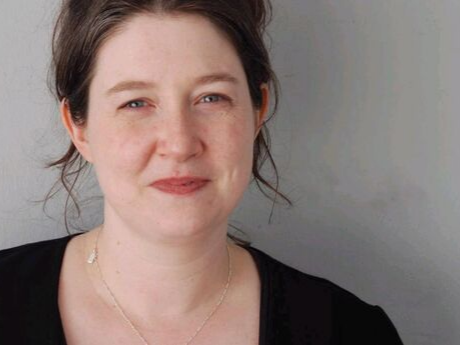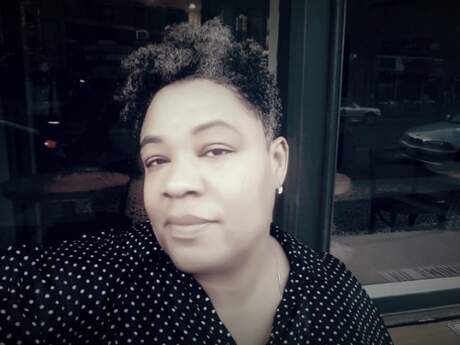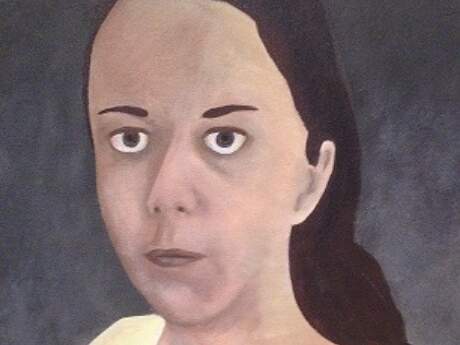New American Poets
New American Poets: Matthea Harvey

Sad Little Breathing Machine
Engine:@
Under its glass lid, the square
of cheese is like any other element
of the imagination—cough in the tugboat,
muff summering somewhere in mothballs.
Have a humbug. The world is slow
to dissolve & leave us. Is it your
hermeneut's helmet not letting me
filter through? The submarine sinks
with a purpose: Scientist Inside
Engineering A Shell. & meanwhile
I am not well. Don't know how to go on
Oprah without ya. On t.v., a documentary
about bees—yet another box in a box.
The present is in there somewhere.
"Sad Little Breathing Machine" by Matthea Harvey from Sad Little Breathing Machine (Graywolf, 2004). Copyright Matthea Harvey. Reprinted with the permission of the author.
Hanging on the wall above my desk is a large black and white photograph of an old figurine of President McKinley, taken by photographer Alex Forman. Because the little president has been magnified from one inch to three feet, his bow tie is just a blur, his hands mere mittens. I think he's wearing spectacles—so he's magnifying while being magnified. He looks nervous but also determined—his right fist is clenched, his left is holding a top hat. Thus we sally forth into poetry, or at least I do. If I believed in muses, he'd be my muse.
The poems in my first book, Pity the Bathtub Its Forced Embrace of the Human Form, investigate vision. Some speak in the voice of people attempting to explain what they see: an illuminator of manuscripts, a lion hunter, artist Max Beckmann. Others describe a painting or the process of painting, and others invent worlds that skew the seen. For example, in "The Gem Is On Page Sixty-Four," beauty is outlawed. In "One Filament Against the Firmament," people go blind attempting to see beyond what their eyes perceive. A number of the poems in my first book employ what I call "swivel lines" or "hinges"—i.e., the last word of a sentence is also the first word of the next phrase. These lines are like simple machines, creating a magnetic enjambment which holds the poems together (or keeps them from flying apart).
My second book, Sad Little Breathing Machine, (forthcoming from Graywolf in 2004) involves more complex machinations, examining the various systems we live amongst, under, and in-between. "Introduction" poems divide the book into sections. In these poems, the world, or Eden, for example, is imagined as a system literally in dialogue with humans. The system begins speaking, and the human voice (a collective "we") tries to engage with and understand the terms of the conversation. The book's engine poems are themselves systems—they often have what I call an "engine" in the epigraph position beneath the title. These can be visual diagrams (as in "Engine: @ or Engine:—><—!) or phrases, and sometimes hide in the title. In effect, the engines "run" the poems, mysterious except to their mechanic. By contrast, the book's prose poems make their theories and thinking explicit. Each poem creates a world out of one idea—in one, a king lives according to his theory of Baked Alaska, in another sadness is carried away by miniature ponies.
My McKinley is only a short gallop away. He looms in my room and in my imagination. With him in mind, I'd like to request that Wallace Stevens write a poem called "Tea in the Lens of Zoom" and one called "Anecdote of a Kaleidoscope."


